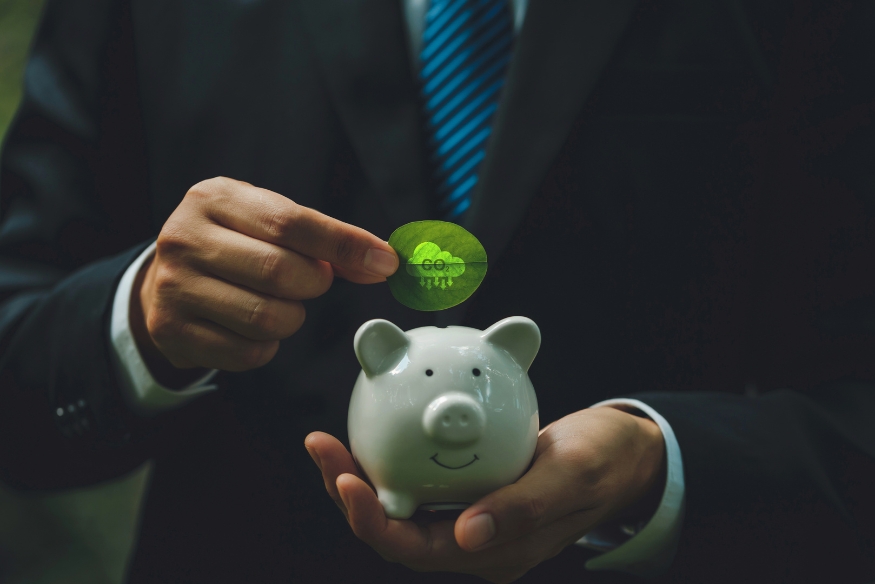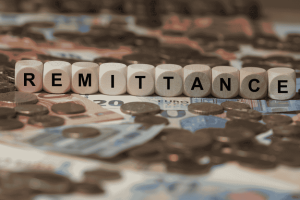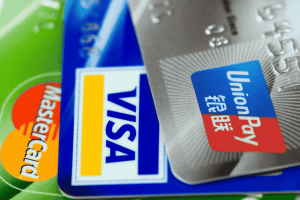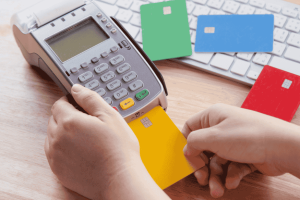Have you ever wondered if your money could do more than just grow in a bank account? What if your savings and investments could help protect the environment, support local communities, and build a better future? Welcome to the world of sustainable banking—a movement that’s transforming the way banks operate and how you, as a customer, can make a positive impact through your financial choices.
In this article, you’ll discover what sustainable banking really means, why it’s becoming a powerful force in modern finance, and how you can get involved. Let’s dive in and explore how your money can be a catalyst for change!
What Is Sustainable Banking?

Sustainable banking goes beyond traditional profit-driven banking. It’s about integrating environmental, social, and governance (ESG) principles into every aspect of banking operations. In simple terms, sustainable banks aim to:
- Finance projects and businesses that benefit people and the planet
- Minimize their own environmental impact
- Promote ethical and transparent practices
Why does this matter? Because banks play a huge role in shaping economies. Where they choose to invest and lend money can accelerate—or slow down—progress toward a more sustainable world.
Why Is Sustainable Banking Gaining Momentum?
1. Growing Awareness and Demand
People everywhere are becoming more conscious of climate change, social inequality, and the need for responsible business. Customers are asking tough questions:
Where does my bank invest? Does it support fossil fuels or green energy? Does it help local communities or just chase profits?
Banks are responding by offering products and services that align with these values.
2. Regulatory Pressure
Governments and regulators are introducing new rules to encourage sustainable finance. Banks are now required to disclose their environmental impact, manage climate risks, and support green initiatives.
3. Long-Term Profitability
Sustainable banking isn’t just good for the planet—it’s good for business. Companies with strong ESG practices often perform better over time, face fewer risks, and attract more loyal customers.
Key Features of Sustainable Banking
Curious about what makes a bank truly sustainable? Sustainable banks go beyond traditional finance by integrating environmental and social responsibility into their core practices. Here are the key features to watch for:
1. Green Loans and Investments
Sustainable banks actively prioritize lending and investing in projects that promote environmental stewardship and social well-being. These include:
- Renewable energy projects: Financing solar, wind, hydro, and other clean energy initiatives to reduce reliance on fossil fuels.
- Energy efficiency: Supporting upgrades in buildings, factories, and infrastructure that reduce energy consumption and carbon footprints.
- Sustainable agriculture: Encouraging farming practices that protect soil health, conserve water, and reduce chemical inputs.
- Clean transportation: Investing in public transit, electric vehicles, and other low-emission transport solutions.
- Community development: Promoting affordable housing and initiatives that boost social equity and local economies.
2. Responsible Investment Policies
A fundamental part of sustainable banking is a commitment to ethical investment. These banks actively avoid financing industries that cause harm to the environment or society. Below is a comparison of industries typically excluded versus sectors promoted by sustainable banks:
| Industries Avoided | Sustainable Alternatives Supported |
|---|---|
| Fossil fuels (coal, oil, natural gas) | Renewable energy (solar, wind, hydro) |
| Deforestation and unsustainable logging | Reforestation and sustainable forestry |
| Weapons and arms manufacturing | Peacebuilding and social development projects |
| Unethical labor practices (exploitation, child labor) | Fair trade and worker-friendly enterprises |
Sustainable banks also focus on transparency, regularly publishing reports on their investment portfolios and the impact of their funding decisions.
3. Transparent Reporting

Sustainable banks prioritize transparency by publishing regular, detailed reports that keep customers informed about the impact of their money. These reports typically include:
- Investment breakdowns: Clear insights into which sectors and projects your funds support, ensuring alignment with sustainability principles.
- Carbon footprint disclosures: Measurement and reporting of the bank’s direct and indirect greenhouse gas emissions, highlighting efforts to reduce environmental impact.
- Progress on sustainability goals: Updates on milestones achieved related to environmental targets, social initiatives, and governance improvements, demonstrating ongoing commitment and accountability.
Community Engagement: Building Stronger Connections
Beyond financing, sustainable banks actively engage with the communities they serve. This often involves:
- Supporting local development projects that improve infrastructure, education, and healthcare.
- Offering financial literacy programs designed to empower underserved populations with the knowledge to manage money wisely.
- Backing initiatives that promote economic inclusion and social equity, helping marginalized groups gain access to financial resources.
Eco-Friendly Operations: Leading by Example
Sustainable banks don’t just fund green projects—they integrate eco-conscious practices into their daily operations, such as:
| Operational Practice | Environmental Benefit |
|---|---|
| Reducing paper use | Minimizes deforestation and waste generation |
| Powering offices with renewables | Cuts carbon emissions and reliance on fossil fuels |
| Implementing energy-efficient technologies | Lowers overall energy consumption |
| Encouraging remote work and digital meetings | Reduces commuting-related emissions |
By embedding sustainability into their own business models, these banks demonstrate authenticity and leadership in the transition to a greener economy.
How Sustainable Banking Benefits You
Choosing a sustainable bank isn’t just about feeling good—it can benefit you directly:
- Competitive products: Many offer attractive savings rates, green loans, and ethical investment options.
- Lower risk: By avoiding industries with environmental or social risks, your money may be safer in the long run.
- Transparency: You know exactly where your money is going.
- Positive impact: Your financial choices support a healthier planet and fairer society.
How to Spot a Sustainable Bank
If you’re considering switching to a sustainable bank or opening your first eco-friendly account, it’s important to know what to look for. Here are key questions and indicators that can help you identify a truly sustainable institution:
- Does the bank have a clear and publicly available sustainability policy?
A genuine sustainable bank will openly share its commitments and strategies related to environmental, social, and governance (ESG) issues. This policy should outline their approach to responsible lending, investment exclusions, and operational sustainability.
- Is the bank a member of recognized global initiatives?
Look for affiliations with organizations such as the United Nations Principles for Responsible Banking (PRB), the Global Alliance for Banking on Values, or similar frameworks. Membership shows that the bank is committed to meeting internationally accepted standards.
- Do they offer green loans or sustainable investment funds?
Sustainable banks often provide specialized financial products designed to support renewable energy, energy efficiency, social impact projects, and other environmentally friendly initiatives.
- Is their sustainability reporting transparent and accessible?
Check if the bank regularly publishes easy-to-understand reports about where your money is invested, their environmental impact, and progress toward sustainability goals. Transparency is a strong indicator of accountability.
- Do they actively support local communities and environmental projects?
Beyond finance, sustainable banks engage with and invest in initiatives that empower underserved populations, promote financial literacy, and protect natural ecosystems.
Real-Life Examples: Sustainable Banking in Action
Sustainable banking isn’t just a concept—it’s happening right now, with practical products and services designed to create positive environmental and social impact. Here are some real-world examples of how sustainable banks put their values into practice:
Green Home Loans
Many sustainable banks offer lower interest rates or special terms for financing eco-friendly homes or energy-efficient renovations. These loans encourage homeowners to invest in solar panels, improved insulation, water-saving fixtures, and other green technologies that reduce environmental impact while saving money long-term.
Sustainable Investment Funds
If you’re interested in growing your savings while supporting the planet, sustainable banks often provide investment funds focused on renewable energy, clean water projects, and social impact initiatives. These funds allow you to contribute to global sustainability goals while potentially earning competitive returns.
Community Microloans
Sustainable banks frequently extend small loans to local entrepreneurs and small businesses, especially in underserved communities. These microloans help create jobs, stimulate local economies, and foster inclusive growth—empowering individuals to build better futures for themselves and their neighborhoods.
Challenges and the Road Ahead
Sustainable banking is gaining momentum worldwide, but the journey is not without obstacles. Here are some of the main challenges the sector faces:
1. Greenwashing: Separating Fact from Fiction
Some banks market themselves as sustainable without backing it up with meaningful actions—a practice known as greenwashing. This makes it essential for consumers to dig deeper and look for tangible evidence, such as verified sustainability reports, third-party certifications, and clear impact metrics rather than relying on promotional language alone.
2. Limited Product Availability
While the demand for sustainable financial products is growing, not all banks currently offer a comprehensive range of green loans, investment funds, or eco-friendly accounts. This means choices can be limited depending on where you live or the size of the bank.
3. Balancing Profitability with Purpose
Sustainable banks face the ongoing challenge of finding the right balance between generating profits and fulfilling environmental and social missions. Investing responsibly can sometimes mean higher costs or longer timelines for returns, which requires innovative business models and long-term thinking.
The Road Ahead: Why Sustainable Banking Will Keep Growing
Despite these challenges, the outlook is positive. Key drivers include:
- Increasing consumer demand for ethical and transparent banking options
- Stricter regulations and international commitments pushing banks toward sustainability
- Advances in technology making it easier to assess and manage environmental and social risks
- Growing recognition that sustainability and profitability can go hand-in-hand
As these trends continue, sustainable banking is poised to become not just an alternative but the standard for how financial institutions operate worldwide.
Quick Checklist: Is Your Bank Truly Sustainable?
Use this checklist to evaluate whether your bank aligns with sustainable banking principles:
- Eco-friendly operations
Does the bank implement sustainable practices internally, such as reducing paper use, using renewable energy, or minimizing waste? - Clear sustainability policy and goals
Does your bank openly share its commitments and plans for environmental, social, and governance (ESG) initiatives? - Transparent reporting on ESG practices
Are there regular, accessible reports detailing how the bank manages its impact and progress toward sustainability targets? - Green loans and investment options
Does your bank offer financial products that support renewable energy, energy efficiency, social impact, or other sustainable projects? - Community engagement and support
Is the bank actively involved in local development, financial education, or initiatives that empower underserved communities?
How You Can Support Sustainable Banking
Supporting sustainable banking is easier than you think—and your choices can make a real difference. Here are some practical steps you can take:
Start by inquiring directly about what your bank is doing to promote environmental and social responsibility. Do they have clear policies? What kinds of green products do they offer? Showing interest can encourage banks to be more transparent and accountable. Whenever possible, opt for eco-friendly loans, such as green home mortgages or energy-efficient vehicle financing. Consider investing in ethical funds that prioritize renewable energy, social impact, or community development. Your money then supports positive change.
Don’t hesitate to communicate your priorities to your bank. Banks pay attention when customers express demand for sustainable options—it can help push them to expand their offerings and improve their practices. Raise awareness by encouraging friends and family to learn about sustainable banking. Share articles, social media posts, or your personal experiences. Collective demand from informed consumers is one of the strongest drivers of industry-wide change.
Conclusion: Your Money, Your Impact

Sustainable banking is more than a trend—it’s a movement that empowers you to make a difference every time you save, spend, or invest. By choosing a bank that aligns with your values, you’re not just growing your wealth—you’re helping to build a better world.
Are you ready to make your money matter? Start by exploring your bank’s sustainability policies or looking for new options that put people and the planet first. If you have tips or experiences with sustainable banking, share them in the comments below. And don’t forget to pass this article along to friends who want to join the movement for a greener, fairer financial future!









